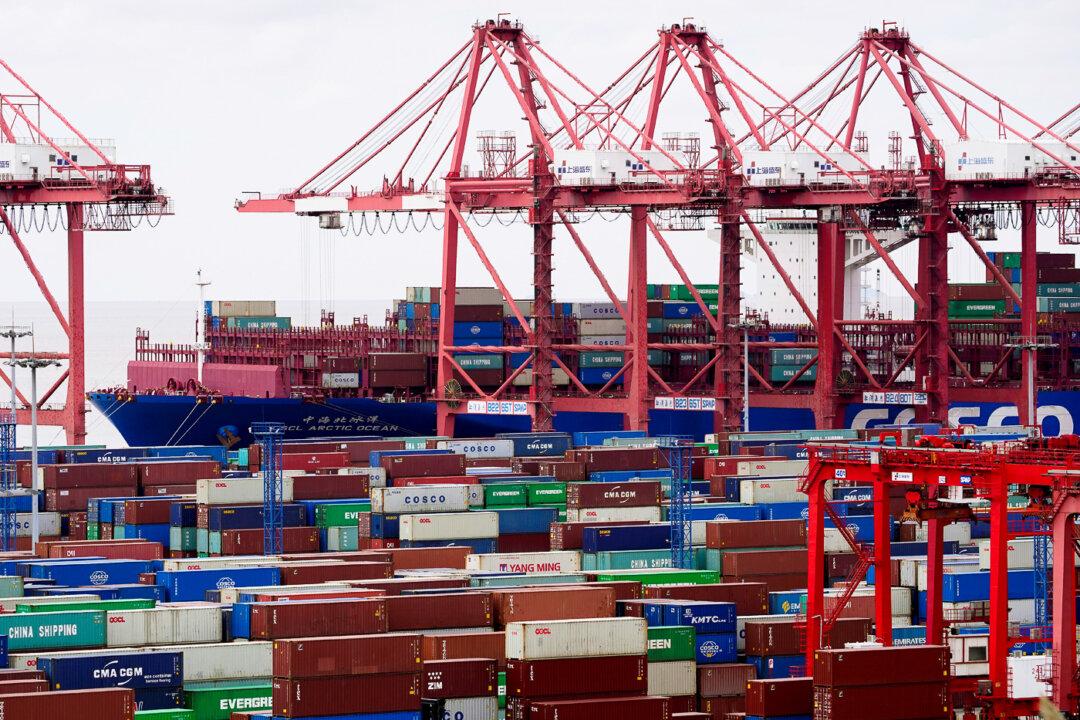One of the most common complaints about Washington’s elite is its easy presumption of superior knowledge and insight. Few would suggest that elected and appointed officials lack knowledge or insight. What galls the public is how this elite so easily dismisses the perspectives of everyone but its own members—and perhaps the faculties of a few elite institutions where its members attended.
Today’s concerns about inflation are a case in point. There can be little doubt that the country is suffering increased rates of inflation. Yet, the best Washington can offer is an easy dismissal of any concerns. With little more than a wave of a hand, Federal Reserve Chairman Jerome Powell and Treasury Secretary Janet Yellen simply describe this troubling development as “transitory.” Neither they, nor it seems anyone else in authority, feel any obligation to explain to the public why its inflation concerns are misplaced. The elites act as if all should simply accept their conclusions because their members have reached them.
Powell and Yellen may be right. The pressure could be transitory. But they could also be wrong, and in any case, the public’s concerns have sufficient support to warrant a thorough and respectful analysis from those public servants.
Nor is this a matter only for policy wonks. As anyone who has lived through the great inflation of the 1970s and 1980s or has studied those times knows, inflation, once embedded in people’s thinking and expectations, can have devastating effects on wealth, as well as the economy’s productive ability. Because inflation leaves everyone uncertain of the value of anything denominated in dollars, it distorts planning, especially when policymakers appear not to have a handle on the situation.
Wage demands build in expectations of future rapid price increases, and pay agreements assume that rising prices will compensate for inflated wage hikes. Because stocks, bonds, and other financial instruments are denominated in dollars, investors flee them in favor of assets that they believe will rise in value along with the rising cost of living—mostly real estate, but also gold, other commodities, art, antiques, and the like. Perhaps today’s real estate surge is a sign that this kind of unproductive adjustment has begun. The shift destroys vast reservoirs of national wealth and, by distorting investment incentives, detracts from the normal process by which the economy innovates and otherwise enhances productive potentials.
Against such an admittedly terrifying prospect, it’s easy to understand why fears arise at the slightest hint of a return to such an inflationary environment. And the record to date offers a good deal more than just hints. The Labor Department’s consumer price index has risen at a 6.6 percent annual rate so far this year, up from 0.2 percent in 2020 and an average annual rate of 1.5 percent during the prior five years, 2015 to 2019. Producer prices, what the Labor Department once called wholesale prices, have risen at a 10.6 percent annual rate so far this year, compared to 0.5 percent in 2020 and a 0.2 percent average yearly rate of increase between 2015 and 2019.
The price deflator for the consumer part of the gross domestic product (GDP), the Fed’s preferred price measure, has risen at a 5.4 percent annual rate so far this year, up from 1.4 percent in 2020 and a 1.3 percent average yearly rate of increase between 2015 and 2019. Oil prices have risen suddenly this year to levels seen only briefly during the last five years. Metals prices are also up sharply, while supermarket chains are stocking up on extra inventories to get ahead of rapidly rising food prices.
This news would be worrisome enough by itself, but underlying it is a plausible cause in the easy monetary policies followed by the Fed for years. Except for relatively minor adjustments along the way, the Fed has kept interest rates extremely low and poured funds into financial markets continually since the 2008–09 financial crisis. Monetary policies of this kind are widely acknowledged as the cause of the great inflations of the 1970s and 1980s. Many throughout the past 10 to 12 years have expressed concerns over the inflationary potential implicit in the Fed’s policies since 2008, but it’s been easy to dismiss them. For one, there were no signs of inflation, as there are today. For another, the money supply, the crucial link from policy to inflation, didn’t grow especially fast.
But now, matters are different. As should be evident, inflation has accelerated, while money growth has exploded. The broad M2 measure of money, for instance, has risen at a 22.2 percent annual rate during the past 17 months, well up from the 5.6 percent annual rate of expansion averaged between 2015 and 2019.

In the face of this picture and the legitimate concerns it raises, Washington officials have offered little more than bland assurances. Powell, when questioned by Congress about the inflationary surge, simply asserted that the leading edge of the inflationary pressure would reverse soon. When pressed by lawmakers from both parties about what he might do should his outlook prove to be wrong, he resisted participating in what he termed a “policy” debate, though congressional testimony would seem to be a perfect place to inform both congressional oversight and the public as to how the Fed plans to remain on top of the situation. Yellen has simply repeated forecasts that inflation would subside to a 2 percent annual rate by year’s end.
Of course, 2 percent is the Fed’s target. To make a forecast that inflation will subside at a Fed target because it’s the Fed target not only ascribes to economic forces greater obedience to political authority than they have shown in the past, but it also has a circular quality. The Fed will hit its target because that’s the target.
Admittedly, both Powell and Yellen have pointed to post-pandemic bottlenecks as a cause of price pressure. Though a valid point, this alone can’t justify the blanket dismissal of the rather intense recent inflationary pressure. They and other Washington officials have also pointed out that inflation subsided during the pandemic, suggesting that the latest price surges are only bringing inflation back to its original moderate trend. Some in support of official Washington’s position have pointed out that inflation concerns have emerged off and on during the past 10 to 15 years, but never came to pass.
Such points, though broadly true, hardly speak to the kind of full-blown analysis that would give the public confidence that Washington is on top of the situation. These points certainly can’t erase today’s inflationary concerns.
For one, a surge in money growth has accompanied the surge in prices, neither of which were present when earlier concerns were voiced. For another, there’s no reason whatsoever to think that prices in some tidy way are striving to sustain any long-term trend. They’re just as likely to establish a new, steeper trend. Third and perhaps most compelling, Washington’s experts clearly have been surprised by the inflationary surge. The Federal Reserve, for example, told everyone at the end of 2020 that it expected inflation this year to run in the range of 1.4 percent to 1.7 percent. When inflation’s reality left these figures in the dust, the Fed in June raised its estimate for 2021 inflation to between 3.1 percent and 3.5 percent.
The current pace of price increase would have to slow with remarkable suddenness to bring the year’s average anywhere near the Fed’s most recent estimates, much less those of seven months ago. These missed forecasts suggest that perhaps Washington’s experts lack the thorough understanding required to make their glib dismissals compelling.
Perhaps Powell, Yellen, and the rest of Washington are right, and the recent price pressure will peter out. Given the dangers involved, all have reason to hope that they’re correct. But if they have a good reason for their opinions, they owe it to themselves and to the public they serve to explain their full analysis. If they could make a convincing case, they could calm today’s fears and win greater confidence from the public that they presumably serve. At the very least, they might share with Congress and, by extension, the public how they would change policy should the inflationary pressure persist.
People then might not develop expectations of an inflationary future and jump to the distorting investment moves that had such ill effects in the 1970s and 1980s. But sadly, no one in Washington seems to have the slightest inclination to respond to either the people’s concerns or the prospect of such devastating effects.





